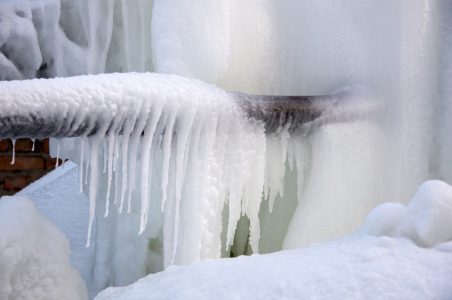Preventing Frozen Plumbing in Winter: Professional Strategies
Preventing Frozen Plumbing in Winter: Professional Strategies
Blog Article
They are making several great points relating to How To Avoid Freezing Pipes overall in the content on the next paragraphs.

Cold weather can damage your pipes, particularly by freezing pipes. Right here's just how to prevent it from occurring and what to do if it does.
Introduction
As temperature levels decline, the danger of icy pipes boosts, possibly resulting in costly repair services and water damages. Recognizing how to stop frozen pipes is essential for home owners in cold environments.
Recognizing Frozen Pipelines
What creates pipelines to freeze?
Pipes freeze when exposed to temperature levels listed below 32 ° F (0 ° C) for prolonged periods. As water inside the pipes freezes, it increases, putting pressure on the pipeline walls and possibly causing them to break.
Risks and damages
Icy pipes can lead to water system interruptions, home damage, and expensive repair work. Ruptured pipes can flood homes and cause substantial architectural damages.
Indicators of Frozen Pipeline
Identifying frozen pipelines early can avoid them from bursting.
Exactly how to recognize frozen pipes
Seek decreased water flow from taps, uncommon odors or sounds from pipes, and noticeable frost on subjected pipes.
Avoidance Tips
Insulating prone pipes
Wrap pipelines in insulation sleeves or make use of warm tape to safeguard them from freezing temperature levels. Focus on pipelines in unheated or external areas of the home.
Home heating techniques
Keep indoor areas properly heated up, especially locations with pipes. Open up cupboard doors to enable warm air to flow around pipes under sinks.
Securing Outside Plumbing
Yard hose pipes and outdoor faucets
Disconnect and drain yard hose pipes prior to winter season. Mount frost-proof faucets or cover exterior taps with shielded caps.
What to Do If Your Pipelines Freeze
Immediate activities to take
If you believe frozen pipes, keep faucets open to soothe stress as the ice thaws. Use a hairdryer or towels taken in warm water to thaw pipes slowly.
Long-Term Solutions
Structural adjustments
Take into consideration rerouting pipes away from exterior wall surfaces or unheated locations. Add added insulation to attics, cellars, and crawl spaces.
Upgrading insulation
Invest in high-grade insulation for pipes, attics, and walls. Proper insulation helps keep regular temperature levels and lowers the threat of icy pipelines.
Final thought
Preventing icy pipelines calls for positive steps and quick actions. By recognizing the causes, signs, and safety nets, house owners can shield their pipes throughout winter.
6 Proven Ways to Prevent Frozen Pipes and Protect Your Home
Disconnect and Drain Garden Hoses
Before winter arrives, start by disconnecting your garden hoses and draining any remaining water. Close the shut-off valves that supply outdoor hose bibs and leave the outdoor faucet open to allow any residual water to drain. For extra protection, consider using faucet covers throughout the colder months. It’s also important to drain water from any sprinkler supply lines following the manufacturer’s directions.
Insulate Exposed Pipes
Insulating your pipes is an effective way to prevent freezing. Pipe insulation is readily available at home improvement stores and is relatively inexpensive. Pay close attention to pipes in unheated areas such as the attic, basement, crawl spaces, or garage. Apply foam insulation generously to create a buffer against the cold. You can also wrap your pipes in heat tape or thermostat-controlled heat cables for added warmth.
Seal Air Leaks
Inspect your home for any cracks or openings that could let in cold air. Seal any holes around the piping in interior or exterior walls, as well as the sill plates where your home rests on its foundation. Additionally, make sure to keep your garage door closed unless you’re entering or exiting. Leaving it open creates a significant air leak that can lead to frozen pipes.
Allow Warm Air Circulation
During cold snaps, it’s essential to allow warm air to circulate evenly throughout your home. Leave interior doors ajar to promote better airflow. Open kitchen and bathroom cabinets to help distribute heat consistently around the rooms. If you have small children or pets, be sure to remove any household chemicals or potentially harmful cleaners from open cabinets for safety.
Let Faucets Drip
A small trickle of water can make a big difference in preventing ice formation inside your pipes. When temperatures drop significantly, start a drip of water from all faucets served by exposed pipes. This continuous flow helps prevent the water from freezing. Additionally, running a few faucets slightly can relieve pressure inside the pipes, reducing the chances of a rupture if the water inside does freeze.
https://choateshvac.com/6-proven-ways-to-prevent-frozen-pipes-and-protect-your-home/

I discovered that blog posting on How To Avoid Freezing Pipes while surfing around the search engines. Liked our post? Please share it. Let another person check it out. I truly appreciate reading our article about Prevent Frozen Pipes .
Click Here Report this page